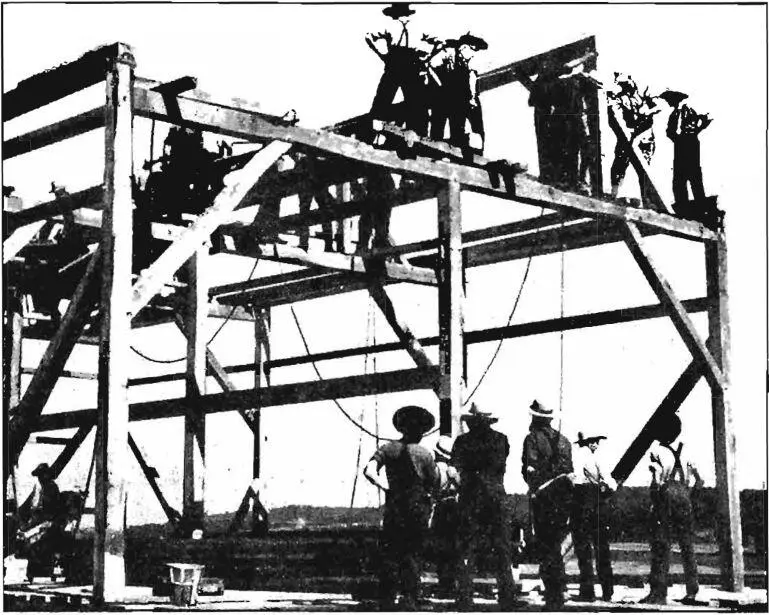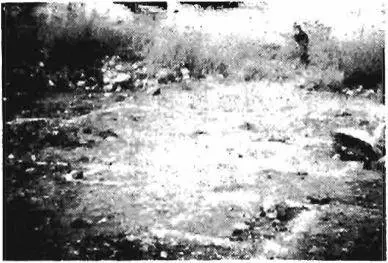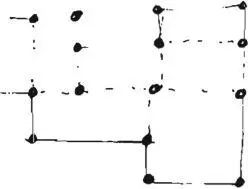Christopher alexander - A pattern language
Здесь есть возможность читать онлайн «Christopher alexander - A pattern language» весь текст электронной книги совершенно бесплатно (целиком полную версию без сокращений). В некоторых случаях можно слушать аудио, скачать через торрент в формате fb2 и присутствует краткое содержание. Жанр: Прочая научная литература, на английском языке. Описание произведения, (предисловие) а так же отзывы посетителей доступны на портале библиотеки ЛибКат.
- Название:A pattern language
- Автор:
- Жанр:
- Год:неизвестен
- ISBN:нет данных
- Рейтинг книги:3 / 5. Голосов: 1
-
Избранное:Добавить в избранное
- Отзывы:
-
Ваша оценка:
- 60
- 1
- 2
- 3
- 4
- 5
A pattern language: краткое содержание, описание и аннотация
Предлагаем к чтению аннотацию, описание, краткое содержание или предисловие (зависит от того, что написал сам автор книги «A pattern language»). Если вы не нашли необходимую информацию о книге — напишите в комментариях, мы постараемся отыскать её.
A pattern language — читать онлайн бесплатно полную книгу (весь текст) целиком
Ниже представлен текст книги, разбитый по страницам. Система сохранения места последней прочитанной страницы, позволяет с удобством читать онлайн бесплатно книгу «A pattern language», без необходимости каждый раз заново искать на чём Вы остановились. Поставьте закладку, и сможете в любой момент перейти на страницу, на которой закончили чтение.
Интервал:
Закладка:
A
outside the room
In order to make an alcove or thick wall work as a buttress, build its roof as near as possible to a continuation of the curve of the floor vault immediately inside. Load the roof of the buttress with extra mass to help change the direction of the forces—roof vaults (220). Recognize that these thick walls must be outside
987
the main space of the room, below the main vault of the room— floor-ceiling vaults (219), so that they help to buttress the horizontal forces generated by the main vault of the ceiling. When you lay out columns and minor columns, put a column at the corner of every thick wall, so that the wall space, like other social spaces, becomes a recognizable part of the building structure-COLUMNS AT THE CORNERS (2 I 2) . . . .
2 12 COLUMNS AT THE
| CORNERS** |
|---|
 |
989
. . . assume that you have worked out the roof plan, and laid out ceiling vaults for every room on every floor—roof layout (209), floor and ceiling layout (210). These vaults are not only the basis of the structure, but also define the social spaces underneath them. Now it is time to put columns at the corners of the vaults. This will both complete them as clearly defined social spaces—structure follows social spaces (205)—and also be the first constructive step in the erection of the building —gradual stiffening (208).
•£•
We have already established the idea that the structural components of a building should be congruent with its social spaces.
In structure follows social spaces (205) we have established that the columns need to be at corners of social spaces for psychological reasons. In efficient structure (206) we have established that there needs to be a thickening of material at the corners of a space for purely structural reasons.
Now we give yet a third still different derivation of the same pattern—not based on psychological arguments or structural arguments, but on the process by which a person can communicate a complex design to the builder, and ensure that it can be built in an organic manner.
We begin with the problem of measurement and working drawings. For the last few decades it has been common practice to specify a building plan by means of working drawings. These measured drawings are then taken to the site; the builder transfers the measurements to the site, and every detail of the drawings is built in the flesh, on site.
This process criffiles buildings . It is not possible to make such a drawing without a T-square. The necessities of the drawing itself change the plan, make it more rigid, turn it into the kind of plan which can be drawn and can be measured.
But the kind of plans which you can make by using the pattern
2 12 COLUMNS AT THE CORNERS
language are much freer than that—and not so easy to draw and measure. Whether you conceive these plans out on the site—and mark them on the site with sticks and stones and chalk marks— or draw them roughly on the back of envelopes or scraps of tracing paper—in all events, the richness which you want to build into the plan can only be preserved if the builder is able to generate a living building, with all its slightly uneven lines and imperfect angles.

 |
| Chalk marks on the ground. |
In order to achieve this aim, the building must be generated in an entirely different manner. It cannot be made by following a working drawing slavishly. What must be done, essentially, is to fix those points which generate the spaces —as few of them as fossible —and then let these points generate the walls, right out on the building site, during the very process of construction.
You may proceed like this: first fix the corner of every major space by putting a stake in the ground. There are no more than a few dozen of these corners in a building, so this is possible, even if the measurements are intricate and irregular. Place these corner markers where they seem right, without regard for the
exact distances between them. There is no reason whatever to try and make modular distances between them. If angles are slightly off, as they often will be, the modular dimensions are impossible anyway,
 |
| “Staking out ” |
These simple marks are all you need to build the building. Once construction starts, you can start very simply, by building a column, over each of these marks. These columns will then generate the rest of the building, by their mere presence, without
212 COLUMNS AT THE CORNERS
any further need for detailed measurements or drawings, because the walls will simply be built along the lines which connect adjacent columns: and everything else follows.
For the upper storys, you can make drawings of the column positions and once again transfer them to the actual building while it is being built. As you will see from final column distribution (213), upper story columns do not need to line up perfectly with downstairs columns.
With this procedure, it becomes possible to transfer a rather complex building from your mind, or from a scrap of paper, to the site—and regenerate it in a way which makes it live out there.
The method hinges on the fact that you can fix the corners of the spaces first—and that these corners may then play a significant role in the construction of the building. It is interesting that although it is based on entirely different arguments from structure follows social spaces (203), it leads to almost exactly the same conclusion.
Therefore:
On your rough building plan, draw a dot to represent a column at the corner of every room and in the corners formed by lesser spaces like thick walls and alcoves. Then transfer these dots onto the ground out on the site with stakes.
 |
| columnsat corners |
Once you have the columns for each floor on your vault plan, reconcile them from floor to floor and put in intermediate col-
CONSTRUCTION
umns—final column distribution (213). Note, especially, that it is not necessary for the corner columns to fall on a grid. The floor vaults and roof vaults can be made to fit any arrangement of columns, and still make a coherent structure—thus allowing the social spaces to determine the building shape without undue constraint from purely structural considerations—floorceiling VAULTS (219), ROOF VAULTS (220).
These columns will not only guide your mental image of the building, they will also guide construction: first put the columns and the column foundations in place; then, to make the frame complete, tie the columns together around each room with the perimeter beam—root foundations (214), box columns
Читать дальшеИнтервал:
Закладка:
Похожие книги на «A pattern language»
Представляем Вашему вниманию похожие книги на «A pattern language» списком для выбора. Мы отобрали схожую по названию и смыслу литературу в надежде предоставить читателям больше вариантов отыскать новые, интересные, ещё непрочитанные произведения.
Обсуждение, отзывы о книге «A pattern language» и просто собственные мнения читателей. Оставьте ваши комментарии, напишите, что Вы думаете о произведении, его смысле или главных героях. Укажите что конкретно понравилось, а что нет, и почему Вы так считаете.












